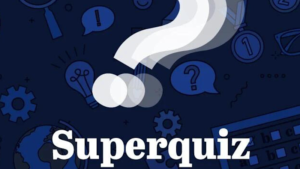
UWA Vice Chancellor Amit Chakma.
UPDATE: The University of Western Australia (UWA) is experiencing a significant drop in prospective student enrollment, as brand research highlights perceptions of the institution as “elitist, aloof, and standoffish.” This alarming trend comes amidst a surge of school leavers in Western Australia, revealing UWA’s struggle to attract students against competitors like Curtin University and the University of Notre Dame.
Recent findings presented at a forum for UWA graduates signal an urgent need for change. Despite a population increase due to a 2006 baby boom, UWA’s market share has plummeted, according to chief marketing officer Haylee Felton. “Unfortunately, all of that increase in market size went to Curtin and Notre Dame,” she stated. “Our first preferences have also been declining.”
This decline is critical as UWA, historically recognized for its prestige, faces an identity crisis. The research reveals a shift in student perceptions, with many viewing UWA as overly theoretical and not sufficiently focused on job readiness. The report indicated that high entry requirements, while enhancing UWA’s image, create barriers for potential applicants.
“Current perceptions are that UWA is elitist, aloof and standoffish,” the report stated.
In stark contrast, perceptions of Curtin University are described as “overwhelmingly positive.” The findings underscore a competitive landscape where UWA is often outspent by rivals that are more effective in marketing themselves. “Our brand health metrics have been in long-term decline since about 2017-18,” Felton noted.
As the economic climate shifts, with low unemployment and high living costs, many students are reconsidering their educational paths. Felton pointed out that only about 28 percent of WA students complete their schooling with an Australian Tertiary Admission Rank (ATAR), compared to 55 percent in some states. This trend poses challenges for traditional universities relying heavily on ATAR participation.
Moreover, perceptions of UWA’s intimidating campus and outdated curriculum are further deterring potential students. Felton emphasized the need for the institution to better connect with its community and reframe its strengths. “We need to break the idea that there is only one type of student for UWA,” she said, highlighting the importance of sharing UWA’s story of connection to the state.
The university’s vice-chancellor, Amit Chakma, addressed the forum, acknowledging systemic challenges in the education sector. He confirmed UWA’s commitment to remaining stable while exploring new strategies to boost enrollment, including the opening of two campuses in India. Chakma also hinted at ongoing discussions regarding potential mergers with other WA universities, including Murdoch and Curtin.
In light of these developments, the Cook Government has initiated a cost-benefit analysis of potential university mergers in WA. A committee led by former Labor minister Alannah MacTiernan is set to report back by the end of the year, amidst ongoing resistance from Curtin and Murdoch, who argue that mergers could be disruptive and costly.
The urgency of revitalizing UWA’s brand cannot be overstated. Felton revealed a new “brand goal” aimed at transforming UWA from a traditional, elitist university into an adaptive, iconic institution that emphasizes societal impact and student outcomes. “We will shift perceptions of UWA to create unmatched contributions to the people and place of WA and beyond,” she asserted.
As UWA grapples with its identity and market position, students and stakeholders alike are left questioning the future of the institution. With the challenges ahead, the university’s commitment to evolving its educational offerings and enhancing student experience will be critical in regaining its competitive edge.
For those considering their educational options, the landscape in WA is rapidly changing, and the implications of these developments will resonate far beyond the campus gates.





